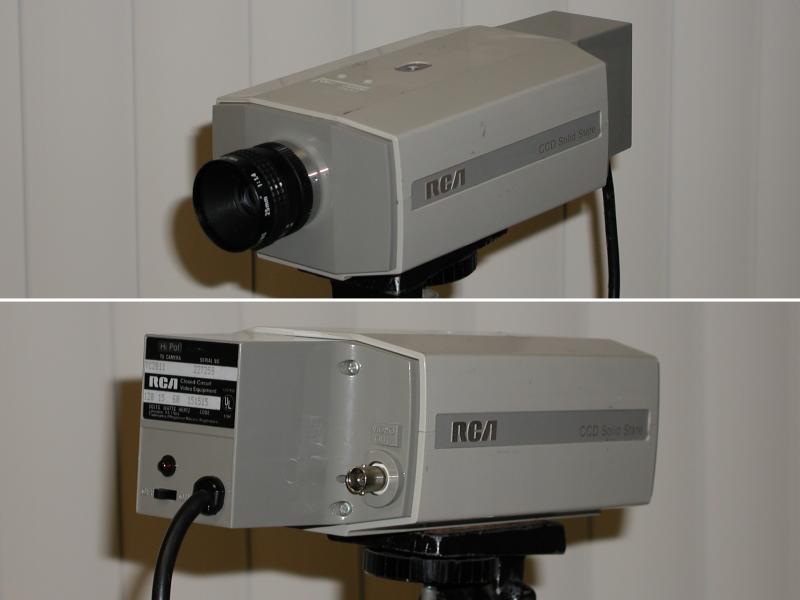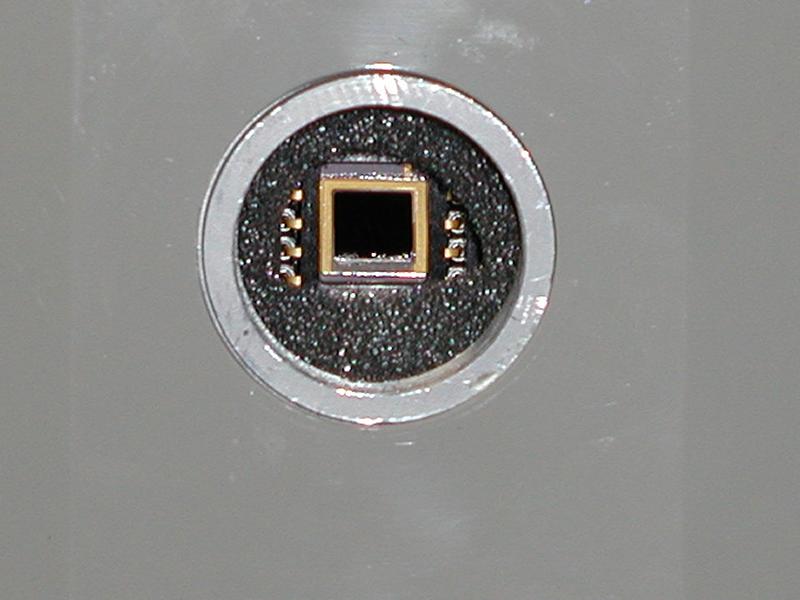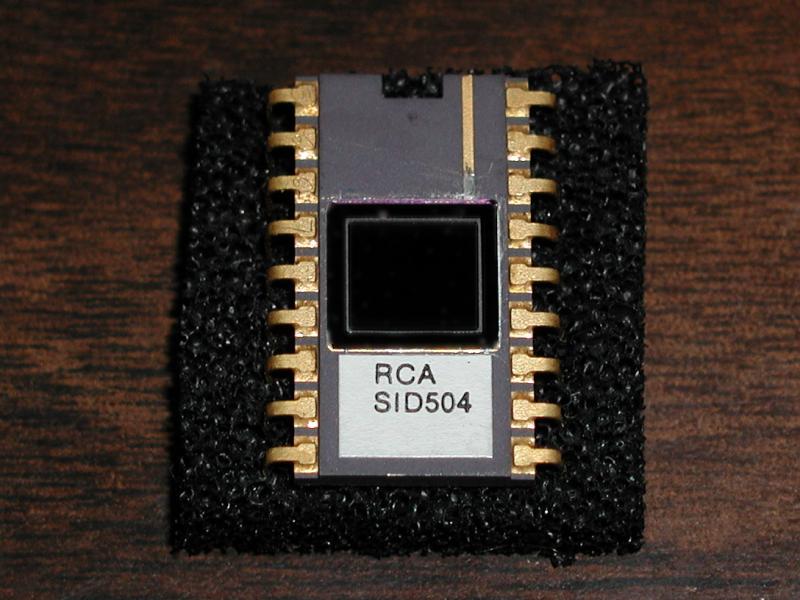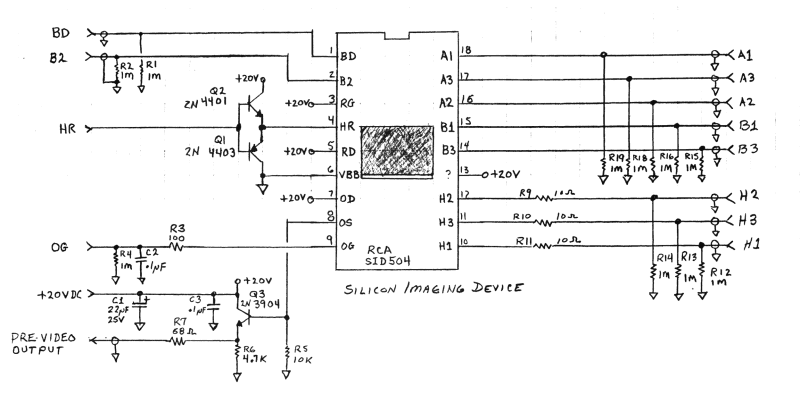LabGuy's World: 1980 RCA TC-2811
First Generation CCD Surveillance Camera
 
1980 RCA TC-2811 First Generation CCD Surveillance Camera Here is a very interesting piece of history. RCA made some of the first commercially available CCD chips. A CCD (Charge Couple Device) is a silicon solid state imaging device that replaces the vidicon tubes of the past. CCD's are made up a two dimensional array of photo detectors coupled to an array of shift registers. In operation, the imaging cycle is roughly as follows: The device is "reset" or cleared. Then some time is allowed to pass. This is called the integration time. I think of it "staring time". The charges that have accumulated on the photo sites are shifted to a second portion of the chip called the storage registers. The photo sites are now rest again and begin staring for the next frame cycle. The charges, now being held in what is essentially an analog memory are fed into a second one dimensional shift register for read out on a line by line basis. This continues until all of the charges have been read out of the storage array. At the end of the integrating cycle, this process is repeated. CCD's can actually be read out at any speed, up to their maximum, or even "frozen" and read out continuously. In a video camera application, things are simpler. The cycle is just a canned set of pulses that repeats 60 times a second, forming a continuous output know as "video". 
Actual RCA SID504 Chip If you examine a modern CCD video camera, it may have shutter speed settings. These are the length of time that the photo sensors are allowed to stare before they are read out. The "sports shutter" setting is one that only integrates for 1/10,000 of a second, before the read out cycle begins and essentially freezes live action. While watching pro sports broadcasts, you may see this in the form of distinctly individual frames. It is a kind of motion artifact in the real time video. But, it pays its way when the still and slow motion frames are examined without any motion blurring. Of course, the shorter the time selected, the less light collected. The chip used in this camera is called a SID504. It has 402 (active) columns by 256 rows. Rows correspond to scan lines on your TV. This chip actually makes great pictures. It is also extremely infrared sensitive! It is handy for checking remote controls, or for seeing by the light emitted by a soldering iron! This camera is a lot of fun! The SID504 was and still is very popular with amateur and even some professional astronomers! On the web, there are references to the SID504 on several astronomical web sites. UPDATE INFO: 03.0124 
RCA SID504 PARTIAL CIRCUIT DIAGRAM . This type of chip is extremely complicated on one hand, but very simple on the other. I will be posting more data on this part as I find it. The above explanation may not be 100% accurate, but I will correct it as the information becomes available. The diagram shown above was hand traced from a small circuit board containing the SID504 chip. This portion of the circuit is deceptively simple. The driver electronics for a CCD are a marvel of complexity. Perhaps this can evolve into a project.... WANTED: Service manual for this camera and an RCA data book for the SID504 chip, circuit diagrams using the SID504, software example source code of computerized controllers. Essentially anything you know about this chip. I'll be eternally grateful! [HOME]......[MUSEUM OF EXTINCT VIDEO CAMERAS] Last updated: January 06, 2005 |